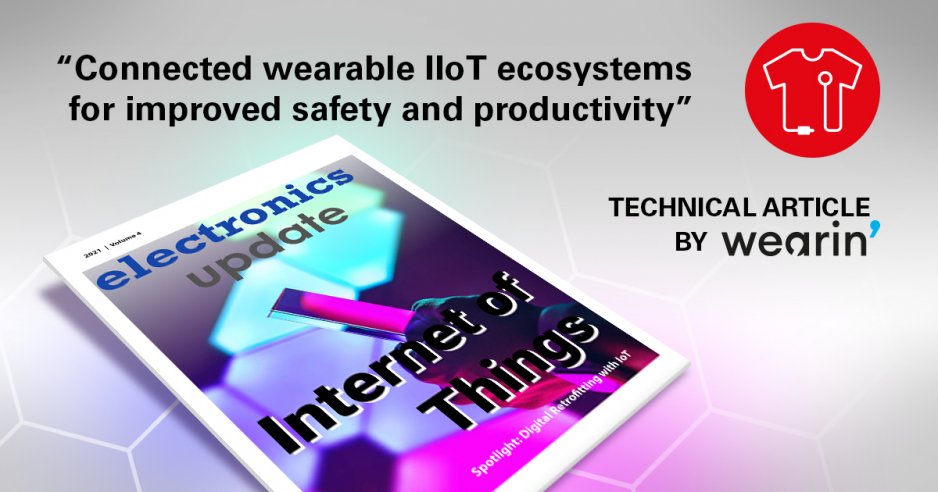Connected wearable technology and sensors integrated into day-to-day equipment help improve workers’ situational awareness, mobility and communications. Moreover, AI-driven and smart real-time data capture and analysis can help organizations make proactive improvements, avoiding risks before they occur. In the IoT Magazine 2021 Edition from Electronics Update, Wearin’s Technical Director Alvaro Goncalves an insight into how connected wearable ecosystems and digital twins are helping make hazardous work environments safer and more productive across all industries.
Improving situational awareness, safety and productivity through connected wearable IIoT ecosystems
juin 8, 2021 · 1 durée de lecture (min)With the advent of industry 4.0, organizations are scrambling to digitalize their operations. The creation of digital twins is all the rage. These provide digital images of operations, useful for refining processes, virtualizing tests, running projections, trying out innovations digitally, and speeding up implementation in real-world settings. The problem is, they tend to focus on infrastructure and industrial processes. Less attention is paid to individual workers. Lone workers in particular face a high risk of accidents. One way of improving safety is to recruit more people or invest in additional systems, thereby increasing costs. A better way is to develop smart, holistic wearable ecosystems that save lives, save revenue and increase overall performance.
[…]
The challenge for design engineers and integrators of IIoT (Industrial Internet of Things) ecosystems is to develop and deploy wearable solutions that address known pain points and: dramatically reduce the number of injuries per year; reduce or prevent errors and mistakes; provide real-time insights to drive accurate data-driven decision making for long-term result improvements; help reduce the cumulative effect of sub-optimal processes: ensure the continuous improvement of efficiency; reduce staff turnover thanks to improved safety standards. Apt solutions put humans at the center and link up the two worlds of infrastructure and people. For example, in digital-twin initiatives, they add a digital picture of workers to those of machines and operations, giving context to the data collected and prescribing intelligent AI-based actions.
This is the unified, “connectivity-by-design” approach adopted by Wearin’, the spinoff created by the Swiss-based Fischer Connectors Group.
Fischer Connectors joins the Single Pair Ethernet System Alliance to advance the development of the SPE technology across further demanding application fields
mai 12, 2021 · 4 min read

